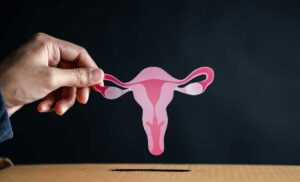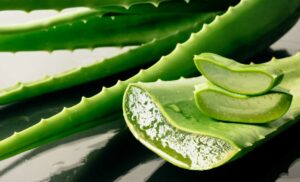The journey of managing health conditions can be intricate, especially when faced with the coexistence of conditions such as Hidradenitis Suppurativa (HS) and Polycystic Ovary Syndrome (PCOS). In this blog, we delve into the intersection of Hidradenitis Suppurativa and PCOS, exploring treatment strategies that can provide relief and enhance the overall well-being of individuals navigating these complex health challenges.
Contents
What Is Hidradenitis Suppurativa?
Hidradenitis Suppurativa (HS), in simple terms, is a chronic skin condition characterized by the development of painful, inflamed bumps or lumps beneath the skin. These lesions typically occur in areas where skin rubs together, such as the armpits, groin, buttocks, and under the breasts. Over time, these bumps can also progress to abscesses, which may rupture and lead to the formation of tunnels beneath the skin.
HS is not caused by poor hygiene and is believed to result from inflammation of hair follicles and sweat glands. It can be a challenging and often painful condition, impacting the quality of life for those affected. While the exact cause of HS is not fully understood, factors such as genetics, immune system dysfunction, and lifestyle may contribute to its development. Seeking medical attention for proper diagnosis and management is crucial for individuals dealing with Hidradenitis Suppurativa.
Why Does PCOS Cause Hidradenitis Suppurativa?
Polycystic Ovary Syndrome (PCOS) and Hidradenitis Suppurativa (HS) are two distinct conditions, but they share a connection through hormonal imbalances and inflammation. PCOS is a hormonal disorder that affects the ovaries, leading to symptoms such as irregular periods, ovarian cysts, and increased androgen (male hormone) levels. HS, on the other hand, is a skin condition characterized by painful, inflamed bumps and abscesses. The link between PCOS and HS is not entirely clear, but it is believed that the elevated androgen levels in PCOS may contribute to the development or exacerbation of HS.
Androgens can influence hair follicles and sweat glands, leading to inflammation and the formation of lesions in areas where skin rubs together. The combination of hormonal factors and the body’s response to inflammation may play a role in the co-occurrence of PCOS and HS. It’s important for individuals experiencing symptoms of either condition to seek medical advice for proper diagnosis and management.
Symptoms Of Hidradenitis Suppurativa
Hidradenitis Suppurativa (HS) and Polycystic Ovary Syndrome (PCOS) are distinct medical conditions, but individuals with PCOS may be at a higher risk of developing HS. Here are potential symptoms of Hidradenitis Suppurativa that may be observed in individuals with PCOS:
- Painful Bumps or Lesions: Individuals with HS often experience painful, inflamed bumps or lesions in areas where skin rubs together, such as the armpits, groin, buttocks, and under the breasts. These lesions can be recurrent and may form abscesses.
- Tunneling Under the Skin: HS can lead to the formation of tunnels or tracts beneath the skin, connecting different lesions. This characteristic is known as sinus tracts and is a hallmark of the condition.
- Recurrent Abscesses: The development of recurrent abscesses, which are painful collections of pus, is a common symptom of HS. These abscesses may rupture, leading to drainage and scarring.
- Pain and Tenderness: Affected areas are often painful and tender to the touch. The discomfort associated with HS can impact daily activities and quality of life.
- Scarring: As HS progresses, scarring may occur in the affected areas. The healing process often involves the formation of scars, which can be extensive in severe cases.
- Redness and Inflammation: Inflamed, red, and swollen skin are typical characteristics of HS. The inflammatory nature of the condition contributes to the development of painful nodules and abscesses.
- Foul Odor: The presence of infection and drainage in HS lesions can result in a foul odor. This can be distressing for individuals and contribute to the psychosocial impact of the condition.
Treatment For Hidradenitis Suppurativa During PCOS
Treatment approaches for Hidradenitis Suppurativa during PCOS may vary based on the severity of the symptoms, and a dermatologist or healthcare professional specializing in HS typically guides the management plan. Here are common treatment modalities:
- Topical Treatments: Topical treatments are the first line of defense for HS. These include antibacterial washes containing agents such as chlorhexidine or benzoyl peroxide to reduce bacterial load on the skin. Additionally, topical antibiotics, in the form of ointments or creams can help.
- Systemic Medications: For more severe cases, systemic medications may be helpful. In some situations, short-term use of oral corticosteroids or intralesional injections may be considered to manage acute flare-ups.
- Biologics: Biologic medications, specifically Tumor Necrosis Factor (TNF) inhibitors like adalimumab or infliximab, can help moderate to severe HS cases. These medications target specific inflammatory pathways to reduce symptoms and improve the overall condition.
- Hormonal Treatments: For women with HS, hormonal therapies may be of help, especially if there is an association with hormonal conditions such as Polycystic Ovary Syndrome (PCOS). Hormonal treatments, including birth control pills or anti-androgen medications, aim to regulate hormonal imbalances that may contribute to HS symptoms.
- Lifestyle Modifications: Maintaining a healthy lifestyle is crucial in managing HS. Weight management, avoiding tight-fitting clothing, and practicing good hygiene can help reduce friction and irritation, minimizing the risk of flare-ups.
- Surgical Interventions: In some cases, surgical interventions may be necessary. Incision and drainage procedures can provide relief by draining painful abscesses. More extensive surgical options, such as laser therapy or excision of affected tissue, may help in severe or recurrent cases.
- Pain Management: Managing pain associated with HS is an integral part of treatment. Over-the-counter pain relievers or prescription medications may help alleviate discomfort and improve the overall well-being of individuals dealing with the pain and tenderness associated with HS.
Natural Ways Of Managing Hidradenitis Suppurativa
While natural remedies may not replace medical treatments, they can complement conventional approaches. Here are some natural ways to manage HS:
- Warm Compresses: Applying warm compresses to affected areas can help reduce pain and promote the drainage of abscesses. This can be a soothing and natural way to manage discomfort associated with HS lesions.
- Turmeric: Turmeric, with its anti-inflammatory properties, may be beneficial for managing inflammation in HS. Incorporating turmeric into your diet or taking curcumin supplements after consulting with a healthcare professional may offer natural anti-inflammatory support.
- Tea Tree Oil: Tea tree oil possesses antibacterial properties and may be applied topically to affected areas. Dilute tea tree oil with a carrier oil and perform a patch test before applying it to ensure skin compatibility.
- Aloe Vera: Aloe vera’s soothing properties can provide relief from inflammation and discomfort. Apply pure aloe vera gel to affected areas to promote healing and reduce irritation.
- Maintain a Healthy Diet: Adopting a balanced and anti-inflammatory diet may contribute to overall health and potentially reduce HS symptoms. Emphasize whole foods, fruits, vegetables, and lean proteins while minimizing processed foods, sugar, and dairy.
- Good Hygiene Practices: Practicing good hygiene can help prevent bacterial growth and reduce the risk of infection. Avoid harsh soaps or aggressive scrubbing, as this may exacerbate symptoms.
- Stress Management: Chronic stress can contribute to inflammatory conditions. Incorporate stress-reducing practices such as mindfulness, yoga, or deep breathing exercises to promote overall well-being and potentially reduce HS flare-ups.
- Probiotics: Probiotics, in fermented foods or supplements, may support gut health, which is crucial for immune function. An optimal immune system can contribute to managing inflammatory conditions like HS.
- Wearing Breathable Clothing: Choose loose-fitting, breathable clothing to minimize friction and irritation in affected areas. Avoid tight clothing that may exacerbate HS symptoms.
Conclusion
In conclusion, navigating the intricate intersection of Hidradenitis Suppurativa (HS) and Polycystic Ovary Syndrome (PCOS) requires a comprehensive and tailored approach to treatment. The coexistence of these conditions presents unique challenges, but by addressing both the dermatological manifestations of HS and the hormonal imbalances associated with PCOS, individuals can strive for improved symptom management and enhanced quality of life.
While managing HS and PCOS can be challenging, the resilient spirit of those affected is evident. By seeking early diagnosis, adopting a proactive mindset, and maintaining open communication with healthcare providers, individuals can navigate the complexities of these conditions with grace and determination.





